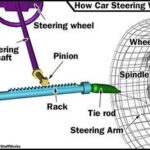Being a responsible car owner goes hand in hand with understanding your vehicle. Proactive maintenance is key, and that starts with familiarizing yourself with the intricate mechanical parts that make your car function. It might seem daunting at first, but grasping the basics of car anatomy empowers you to make informed decisions about maintenance and repairs.
Knowing the different components isn’t just for mechanics; it’s crucial for every driver. You’ll be better equipped to identify potential issues early on, understand repair estimates, and ultimately keep your car running smoothly and safely for longer. This guide will walk you through the essential parts of a car, explaining their functions and importance.
Let’s delve into the fascinating world under the hood and beyond, exploring the key systems and components that make up the anatomy of your vehicle.
Engine Components: The Heart of Your Car
The engine is undeniably the heart of your car, the powerhouse that generates the motion needed to get you from point A to point B. Understanding its core components is fundamental to appreciating how your vehicle operates. Keeping your engine well-maintained is not just about performance; it’s about preserving your car’s value and minimizing running costs in the long run.
Cylinder Block and Pistons: Where Power is Born
The cylinder block is the robust foundation of the engine. Think of it as the engine’s skeleton, a solid structure housing the cylinders. Cylinders are hollow, precisely engineered tubes where the magic of combustion happens.
Inside these cylinders reside pistons. These components, fitted with piston rings to ensure a tight seal, move up and down within the cylinders. This vertical motion is critical. The combustion of fuel and air inside the cylinder creates explosive energy, which pushes the piston. This linear movement of the piston is then converted into rotational motion – the driving force that ultimately propels your car forward. The piston-cylinder interaction is therefore the very core of power generation in your car’s engine.
Crankshaft and Camshaft: Orchestrating Motion and Timing
Working in perfect harmony with the pistons and cylinders are the crankshaft and camshaft. The crankshaft is a rotating shaft that takes the reciprocating (up and down) motion of the pistons and transforms it into rotary motion. This rotational energy is what ultimately powers the wheels.
The camshaft, on the other hand, is responsible for valve timing. It controls the precise opening and closing of the engine valves, ensuring that air and fuel enter the cylinders at the right moment, and exhaust gases are expelled efficiently. The crankshaft and camshaft work in perfect synchronization to ensure smooth and efficient combustion, contributing significantly to the car’s overall performance and driveability.
Intake and Exhaust Manifolds: The Engine’s Lungs
Imagine your car’s engine breathing. The intake manifold and exhaust manifold are essentially the engine’s lungs, managing the flow of air and gases. The intake manifold is responsible for drawing fresh air into the engine cylinders, providing the oxygen necessary for combustion.
Conversely, the exhaust manifold collects the spent gases produced after combustion and directs them away from the engine, eventually leading to the exhaust system and out of the car. Together, these manifolds optimize the engine’s breathing process, ensuring a balanced and efficient combustion cycle. It’s worth noting that electric vehicles, with their fundamentally different propulsion systems, do not have intake and exhaust manifolds.
Powertrain and Gearboxes: Transferring Power to the Wheels
Once the engine generates power, it needs to be effectively transferred to the wheels to make the car move. This is the role of the powertrain system, which includes the gearbox (transmission), differential, and driveshaft. For those driving manual cars, the gearbox is a particularly crucial element, demanding smooth operation and careful handling for optimal performance and longevity.
Different Types of Gearboxes (Transmissions): Managing Speed and Torque
The gearbox, also known as the transmission, is a vital component in the powertrain. It allows the engine to operate efficiently across a range of speeds by changing the gear ratios. Different types of gearboxes offer varying levels of driver involvement and sophistication:
Manual Gearboxes: Driver Control at Your Fingertips
Manual gearboxes put the driver firmly in control of gear selection. They require the driver to manually engage and disengage gears using a clutch pedal and gear stick. This type of transmission provides a direct and engaging driving experience, allowing drivers to adapt to varying driving conditions, such as slippery roads, acceleration needs, and deceleration. Manual transmissions are often favored by driving enthusiasts for the greater sense of control they offer.
Automatic Gearboxes: Effortless Shifting for Convenience
Automatic gearboxes prioritize ease of driving by automatically shifting gears without driver intervention. This eliminates the need for a clutch pedal and gear stick operation. Inside an automatic gearbox, a torque converter plays a crucial role. This fluid coupling allows for smooth gear changes, providing a comfortable and seamless driving experience, particularly in stop-and-go traffic.
CVTs: Seamless and Efficient Performance
Continuously Variable Transmissions (CVTs) represent a more advanced approach to gearbox design. Instead of fixed gears, CVTs utilize a system of pulleys and belts to offer an almost infinite range of gear ratios. This results in exceptionally smooth and continuous acceleration without the noticeable gear changes of traditional transmissions. CVTs are often associated with improved fuel efficiency and a refined driving experience, as they dynamically adapt to changing driving conditions to keep the engine operating at its most efficient point.
Differential and Driveshaft: Distributing Power Evenly
The driveshaft and differential work in tandem to deliver power from the transmission to the wheels. The driveshaft is the rotating component that transmits the engine’s power from the gearbox to the differential.
The differential has the essential function of distributing power evenly to the wheels while allowing them to rotate at different speeds, particularly when turning corners. This is crucial because the outer wheels need to travel a greater distance than the inner wheels during a turn. Without a differential, the wheels would be forced to rotate at the same speed, leading to wheel slippage and difficult handling. Together, the driveshaft and differential ensure smooth and controlled power delivery to the wheels, enabling efficient and stable vehicle motion.
Clutch and Torque Converter: Engaging and Transferring Power
Both the clutch and torque converter are key components that facilitate the engagement and transfer of power within the transmission system, albeit in different types of transmissions. In manual transmissions, the clutch is controlled by the driver and allows for the temporary disengagement of the engine from the gearbox. This is essential for gear changes, allowing the driver to smoothly shift gears without grinding or damaging the transmission.
In automatic transmissions, the torque converter takes the place of the clutch. It acts as a fluid coupling, smoothly transferring engine power to the transmission without a direct mechanical connection. This fluid coupling allows for seamless gear changes and prevents engine stalling when the vehicle comes to a stop while in gear. Both the clutch and torque converter play critical roles in their respective transmission types, ensuring smooth and efficient power delivery.
Fuel and Ignition Systems: Igniting the Combustion Process
For internal combustion engine cars, the fuel and ignition systems are absolutely fundamental. They work together to deliver fuel to the engine and ignite it at precisely the right moment to create the combustion that drives the pistons. A well-functioning fuel and ignition system is paramount to avoid breakdowns and ensure reliable vehicle operation.
Fuel Injection System: Precise Fuel Delivery for Efficiency
Modern engines predominantly utilize fuel injection systems. This sophisticated system replaces older carburettor designs and offers significant improvements in fuel delivery precision. Fuel injectors are responsible for spraying a finely atomized mist of fuel directly into the engine cylinders or intake manifold. This precise fuel delivery optimizes the air-fuel mixture for efficient combustion, resulting in improved engine performance, better fuel economy, and reduced emissions compared to carburettor systems. Fuel injection systems are less prone to issues like clogging and offer more consistent fuel delivery across varying engine conditions.
Spark Plugs and Ignition Coils: The Spark of Life
The ignition system is composed of spark plugs and ignition coils, working in perfect synchronicity to initiate the combustion process. Spark plugs are located in the cylinder head and generate the electrical spark needed to ignite the air-fuel mixture within the cylinders. Ignition coils are responsible for amplifying the battery’s voltage to the high voltage required to create a spark at the spark plug gap. The timing and strength of the spark are crucial for efficient and complete combustion. A properly functioning spark plug and ignition coil system is essential for optimal engine performance, responsiveness, and fuel efficiency.
Throttle Body and Air Intake System: Controlling the Engine’s Breath
The throttle body and air intake system collaborate to regulate the amount of air entering the engine. The throttle body contains a valve that the driver controls with the accelerator pedal. This valve adjusts the opening through which air flows into the engine. The air intake system, which includes components like the air filter and intake piping, ensures that the air entering the engine is clean and free of debris. Together, these systems manage the engine’s “breathing,” controlling the airflow necessary for combustion. Precise control over airflow is critical for achieving optimal engine power, fuel efficiency, and overall performance.
Cooling and Lubrication Systems: Maintaining Optimal Temperature and Smooth Operation
Engines generate a significant amount of heat during operation. Cooling and lubrication systems are essential to prevent overheating and ensure smooth, long-lasting engine performance. These systems work to dissipate heat and reduce friction between moving parts.
Radiator and Cooling Fans: Preventing Overheating
The radiator and cooling fans are primary components in preventing engine overheating. The radiator is responsible for dissipating heat from the engine coolant. Hot coolant circulates through the radiator, and as air flows through the radiator fins (often assisted by cooling fans), heat is transferred to the air, cooling the coolant. Cooling fans enhance airflow through the radiator, especially when the car is stationary or moving slowly, further aiding in heat expulsion. These components work together to maintain the engine at its optimal operating temperature, preventing damage from excessive heat and ensuring efficient performance.
Water Pump and Hoses: Circulating Coolant Throughout the Engine
The water pump and hoses are integral parts of the engine cooling system, responsible for circulating coolant throughout the engine block and cylinder head. The water pump, driven by a belt or chain, forces coolant through the engine, where it absorbs heat generated by combustion. Hoses provide the pathways for the coolant to travel between the engine, radiator, and other cooling system components. This continuous circulation of coolant is crucial for maintaining a stable engine temperature and preventing hotspots that could lead to engine damage.
EV Battery Cooler System: Thermal Management for Electric Vehicles
Electric vehicles (EVs) employ different cooling systems tailored to the needs of their batteries and electric motors. The EV battery cooler system plays a critical role in maintaining the optimal temperature of the battery pack. Similar to a traditional radiator, the battery cooler dissipates heat from the battery coolant. Cooling systems in EVs also often include fans or other methods to enhance airflow and further expel excess heat. Maintaining the battery and electric motor within their optimal temperature range is vital for maximizing battery life, performance, and overall efficiency of the electric vehicle.
Oil Pump and Oil Filter: Lubrication and Filtration for Engine Longevity
The oil pump and oil filter are key components in the engine lubrication system, ensuring smooth operation and longevity. The oil pump circulates engine oil throughout the engine, delivering lubrication to critical moving parts like pistons, bearings, and camshafts. This lubrication reduces friction, minimizes wear and tear, and helps dissipate heat. The oil filter removes contaminants and impurities from the engine oil, preventing abrasive particles from circulating and causing damage. Together, the oil pump and oil filter work to maintain clean and effective lubrication, extending engine life and ensuring reliable performance.
Electrical System: Powering the Car’s Functions
The electrical system is the backbone of your car, providing power for everything from starting the engine to running the lights and accessories. It’s a complex network of components that work together to keep your vehicle functioning. A healthy electrical system is crucial for reliable operation and safety.
Battery: The Initial Power Source
The car battery is the primary source of electrical energy when the engine is off or during starting. It provides the initial power to crank the engine and also powers various electrical accessories when the engine is not running. All cars, including EVs (which have a separate high-voltage battery for propulsion), rely on a 12V battery for starting and running auxiliary systems. Battery failure or reduced capacity is a common cause of car trouble, often requiring battery replacement.
Alternator: Recharging and Sustaining Electrical Power
The alternator is responsible for generating electrical power while the engine is running. It converts mechanical energy from the engine’s rotation into electrical energy, which is used to recharge the battery and power the car’s electrical system. The alternator supplies power to components like the headlights, radio, and other electrical accessories when the engine is running. Crucially, the alternator also regulates the voltage output to maintain a consistent electrical supply and prevent overcharging of the battery.
Starter Motor and Solenoid: Initiating Engine Start-up
The starter motor and solenoid work in conjunction to start the engine. The solenoid is an electromagnetic switch that, when energized by turning the ignition key, engages the starter motor. The starter motor is a powerful electric motor that turns the engine’s crankshaft, initiating the combustion process and starting the engine. This coordinated action transforms electrical energy from the battery into the mechanical motion needed to get the engine running.
Wiring Harness and Fuses: Distributing and Protecting Electrical Flow
The wiring harness is the central nervous system of the car’s electrical system. It’s a network of wires that channels electricity throughout the vehicle, connecting various electrical components to the power source and control units. Fuses are strategically placed within the wiring harness to protect circuits from overloads. If excessive current flows through a circuit, the fuse will blow, interrupting the circuit and preventing damage to components. Together, the wiring harness and fuses ensure a safe, organized, and protected distribution of electrical power throughout the car.
Suspension and Steering Systems: Ensuring Comfort and Control
Suspension and steering systems are critical for ride comfort, handling, and vehicle stability. They work to absorb road imperfections, maintain tire contact with the road, and allow the driver to control the vehicle’s direction. Modern vehicles rely on sophisticated suspension and steering components to provide a smooth and responsive driving experience.
Shock Absorbers and Struts: Smoothing Out the Ride
Shock absorbers and struts are fundamental components of the suspension system. Shock absorbers are designed to dampen vibrations and control spring oscillations, effectively absorbing shocks from bumps and uneven road surfaces. Typically, a car has four shock absorbers, one at each wheel. Struts are a more complex suspension component that combines the functions of a shock absorber and structural support. Often found in the front suspension and sometimes the rear, struts provide both damping and structural support for the vehicle’s chassis. Together, shock absorbers and struts enhance ride comfort by minimizing the impact of road irregularities, providing a more stable and enjoyable driving experience.
Control Arms and Bushings: Stability and Handling
Control arms and bushings are key elements in the chassis that contribute to stability and smooth handling. Control arms are hinged suspension links that connect the wheel hub to the vehicle’s frame or body. They allow the suspension to move up and down while maintaining wheel alignment. Bushings, typically made of rubber or polyurethane, are fitted into the control arm joints. They provide flexibility and cushioning, absorbing vibrations and reducing noise transmission into the cabin. This combination of control arms and bushings helps to absorb road imperfections, maintain proper tire alignment, and ensure a balanced and controlled ride.
Power Steering Pump and Rack: Effortless Maneuvering
The power steering pump and steering rack are essential for power steering systems, making steering easier, especially at low speeds. The power steering pump, driven by the engine, generates hydraulic pressure. This hydraulic pressure is then used by the steering rack, which converts the rotational motion of the steering wheel into linear motion to turn the wheels. Power steering systems significantly reduce the effort required to turn the steering wheel, providing precise and smooth maneuverability and enhancing driving comfort and control, particularly in parking and low-speed maneuvers.
Braking System: Ensuring Safe Deceleration
The braking system is arguably the most critical safety system in your car. It’s responsible for slowing down or stopping the vehicle safely and effectively. A well-maintained braking system is paramount for driver and passenger safety. Brake system components are rigorously tested to ensure reliability and performance.
Brake Pads: Creating Friction for Stopping Power
Brake pads are frictional components that are pressed against the brake rotors to create the friction needed to slow down the wheels. Typically made of composite materials, brake pads convert kinetic energy into heat during braking. This friction force causes the vehicle to decelerate in a controlled manner. Brake pads are designed to withstand high temperatures and repeated use, but they are wear items and will need to be replaced periodically as the friction material wears down. Regular inspection and timely replacement of brake pads are crucial for maintaining reliable braking performance and safety.
Brake Calipers: Applying Pressure to the Brake Pads
Brake calipers are positioned around the brake rotors and house the brake pistons. When the brake pedal is pressed, hydraulic pressure is applied to the pistons within the caliper. These pistons then clamp the brake pads against the brake rotor. This clamping action generates the necessary friction to slow down or stop the wheel’s rotation. Brake calipers are precision-engineered components that must function reliably to ensure responsive and effective braking.
Exhaust System: Managing Emissions and Noise
The exhaust system plays a vital role in managing engine emissions and reducing noise. It directs exhaust gases away from the engine, treats harmful pollutants, and minimizes engine noise for a more comfortable and environmentally conscious driving experience. Maintaining your exhaust system in good condition is important for both vehicle performance and environmental responsibility.
Catalytic Converter: Reducing Harmful Emissions
The catalytic converter is a key component in modern exhaust systems designed to reduce harmful emissions from internal combustion engines. It uses chemical catalysis to convert pollutants like carbon monoxide, hydrocarbons, and nitrogen oxides into less harmful substances such as carbon dioxide, water, and nitrogen. By reducing these harmful gases, the catalytic converter contributes to cleaner air and reduced environmental impact. It’s a crucial component for vehicles to meet emission regulations and operate in an environmentally responsible manner.
Muffler and Resonator: Quieting Engine Noise
The muffler and resonator work together to control and reduce noise generated by the engine’s exhaust. The muffler is the primary noise reduction device in the exhaust system. It uses a series of chambers and baffles to dampen and cancel out sound waves, significantly reducing exhaust noise. The resonator further refines the exhaust sound by tuning specific sound frequencies, helping to eliminate unwanted booming or droning noises and creating a more pleasant exhaust note. Together, the muffler and resonator ensure that the vehicle operates within acceptable noise levels, enhancing driving comfort and reducing noise pollution.
Oxygen Sensors: Monitoring Exhaust Gases for Efficiency
Oxygen sensors are positioned in the exhaust system to monitor the oxygen content of the exhaust gases. These sensors provide crucial feedback to the engine control unit (ECU). The ECU uses this information to precisely adjust the air-fuel mixture being delivered to the engine. By optimizing the air-fuel ratio based on oxygen sensor readings, the engine can achieve more complete and efficient combustion. This leads to improved fuel economy, reduced emissions, and optimal engine performance. Oxygen sensors are therefore vital for both engine efficiency and emissions control.
Interior Components: Comfort and Convenience Inside the Cabin
The interior components of a car are designed for driver and passenger comfort, convenience, and safety. These elements create the driving environment and contribute significantly to the overall driving experience. Well-maintained interior components can also enhance a car’s resale value.
Seats and Seat Belts: Safety and Support for Occupants
Seats are designed to provide comfort and support for occupants during travel. They come in various materials, designs, and adjustability features to accommodate different body types and preferences. Seat belts are essential safety devices designed to secure occupants in their seats in the event of a collision or sudden stop. Modern seat belts often include features like pretensioners that tighten the belt in an impact and force limiters that reduce the risk of chest injury from excessive belt pressure.
Dashboard and Steering Functions: Driver Command Center
The dashboard serves as the driver’s visual command center, displaying essential vehicle information. It typically includes gauges for speed, fuel level, engine temperature, and other critical readings. The dashboard provides a comprehensive overview of the vehicle’s operating status, keeping the driver informed. The steering wheel is not just for steering; it also often integrates various controls for vehicle functions. Modern steering wheels commonly include power-assisted steering components and controls for features like turn signals, windshield wipers, headlights, and multimedia systems, placing essential vehicle functions within easy reach of the driver.
Exterior Components: Style and Protection on the Outside
Exterior components define the car’s appearance, protect the vehicle’s internal parts from the elements, and contribute to aerodynamics and safety. Maintaining the exterior not only enhances the car’s aesthetics but also helps protect its structural integrity.
Features and Controls on Doors: Entry, Exit, and Convenience
The features and controls on doors are integral for convenience, security, and safety. Standard features on car doors include electric window controls, door locks (manual or power-operated), and mirror adjustments (manual or electric). Some vehicles offer advanced features such as keyless entry systems, which allow for unlocking and locking the doors without a physical key, and power-operated doors (like power liftgates or sliding doors), adding to user convenience and accessibility. These door features enhance the user experience and contribute to vehicle security.
Wheels and Tyres: Connecting the Car to the Road
The wheels and tyres are the crucial interface between the car and the road surface. They provide traction, support the vehicle’s weight, and play a significant role in handling, braking, and ride comfort. Choosing the right tyres and maintaining them properly is essential for safety and performance.
Types of Tyres and Their Functions: Matching Tyres to Driving Needs
| Type of tyre | Function |
|---|---|
| Summer tyres | Optimized for warm weather, providing excellent grip and handling in both dry and wet conditions. |
| Winter tyres | Designed for cold climates with specialized treads for superior traction on snow and ice. |
| All-season tyres | Versatile tyres offering a balance of traction and durability for a range of weather conditions, suitable for both wet and dry roads. |
| Performance tyres | Engineered for sporty driving, prioritizing enhanced handling, grip, and responsiveness at higher speeds. |
| Off-Road tyres | Built for challenging terrains, featuring rugged treads and reinforced sidewalls for improved traction and durability on uneven surfaces. |
| Run-flat tyres | Designed with reinforced sidewalls, allowing continued driving at reduced speeds for a limited distance after a puncture. |
| Touring tyres | Focused on providing a smooth and comfortable ride, ideal for long journeys with low noise and good handling characteristics. |
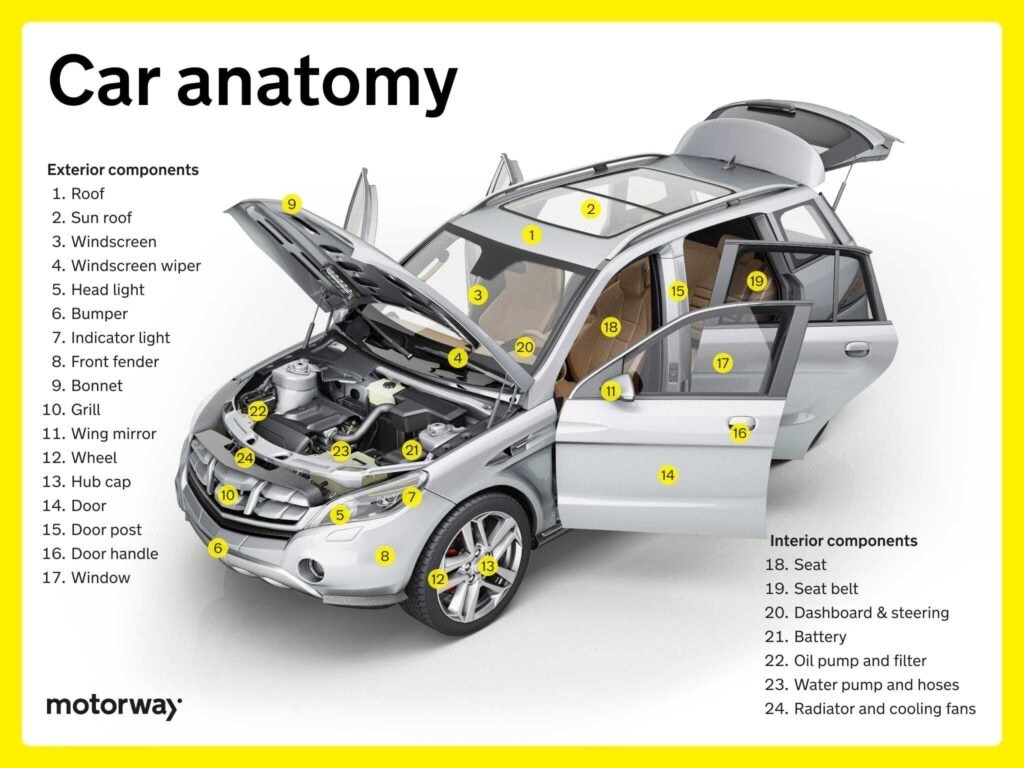
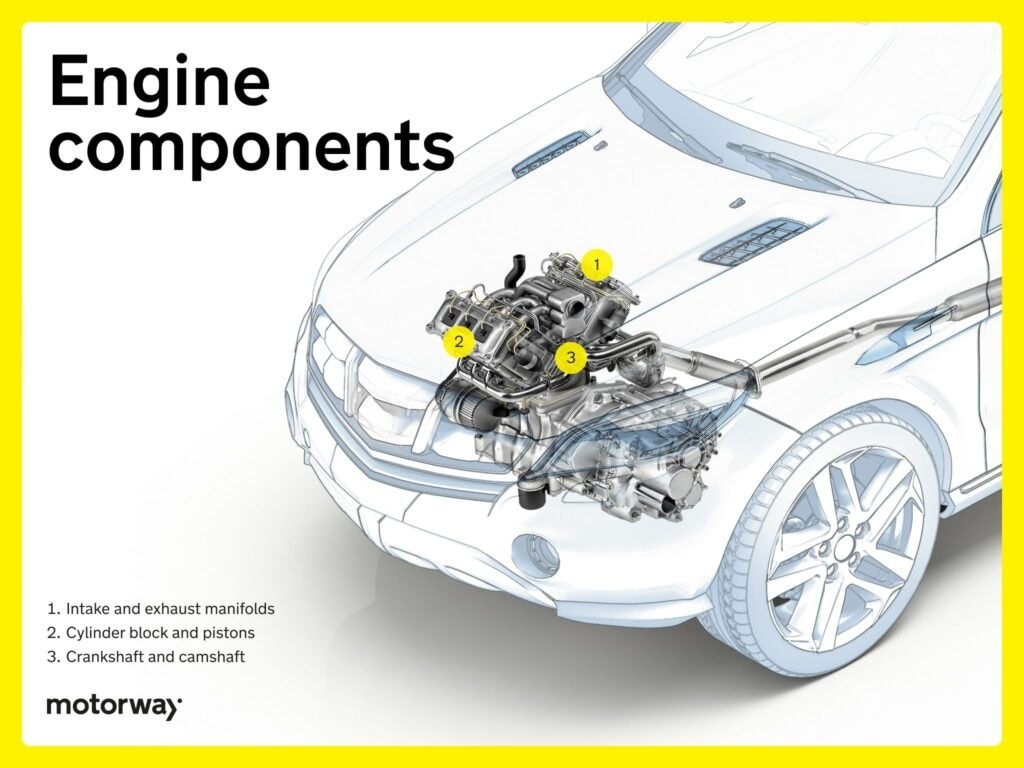
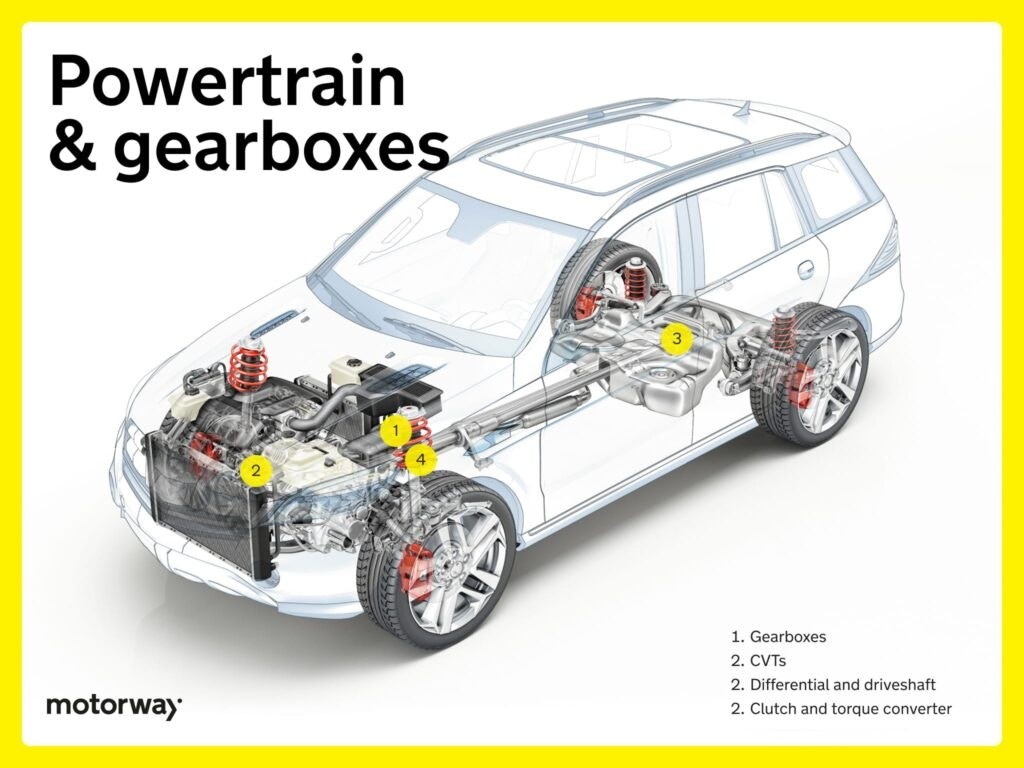
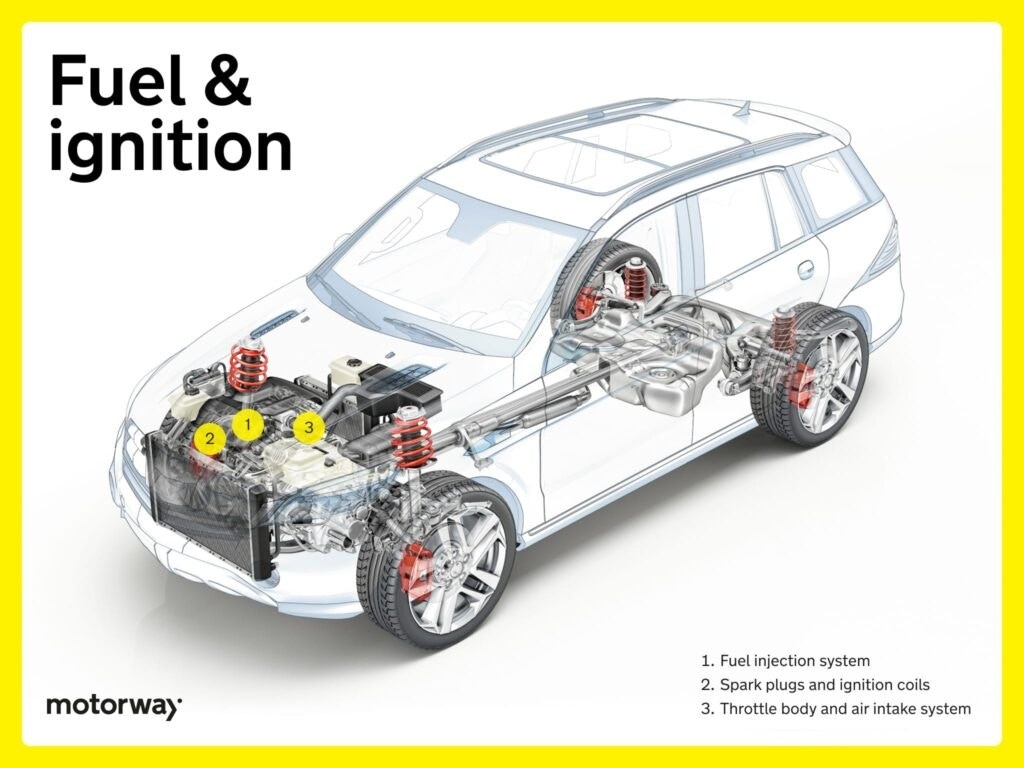
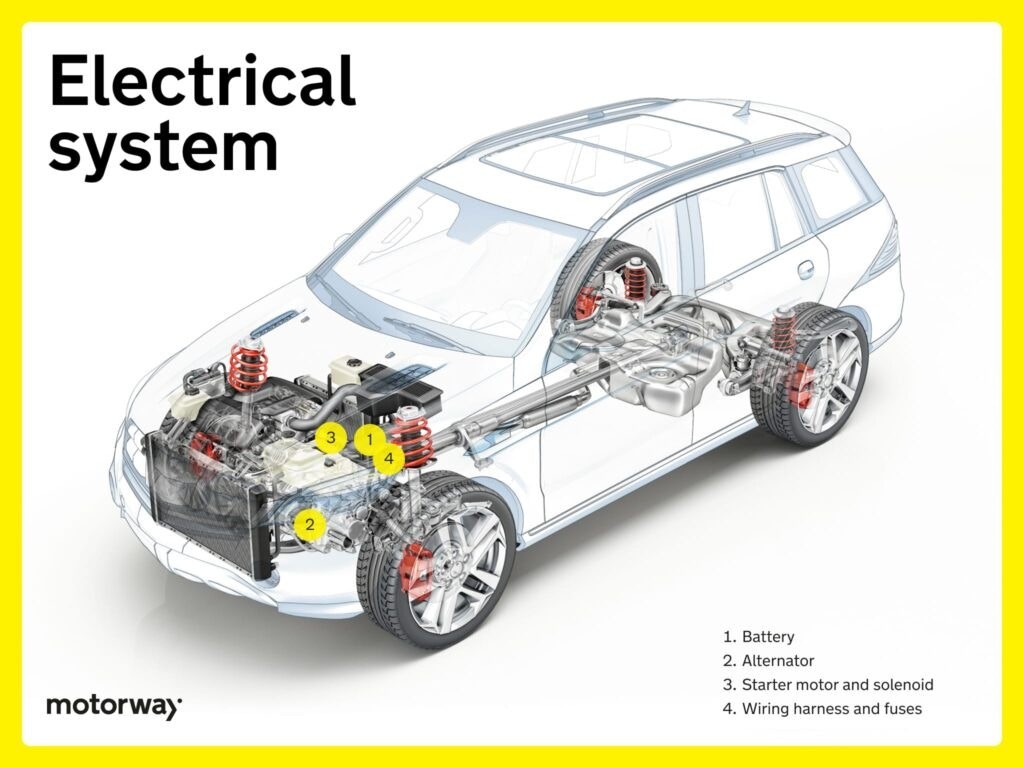
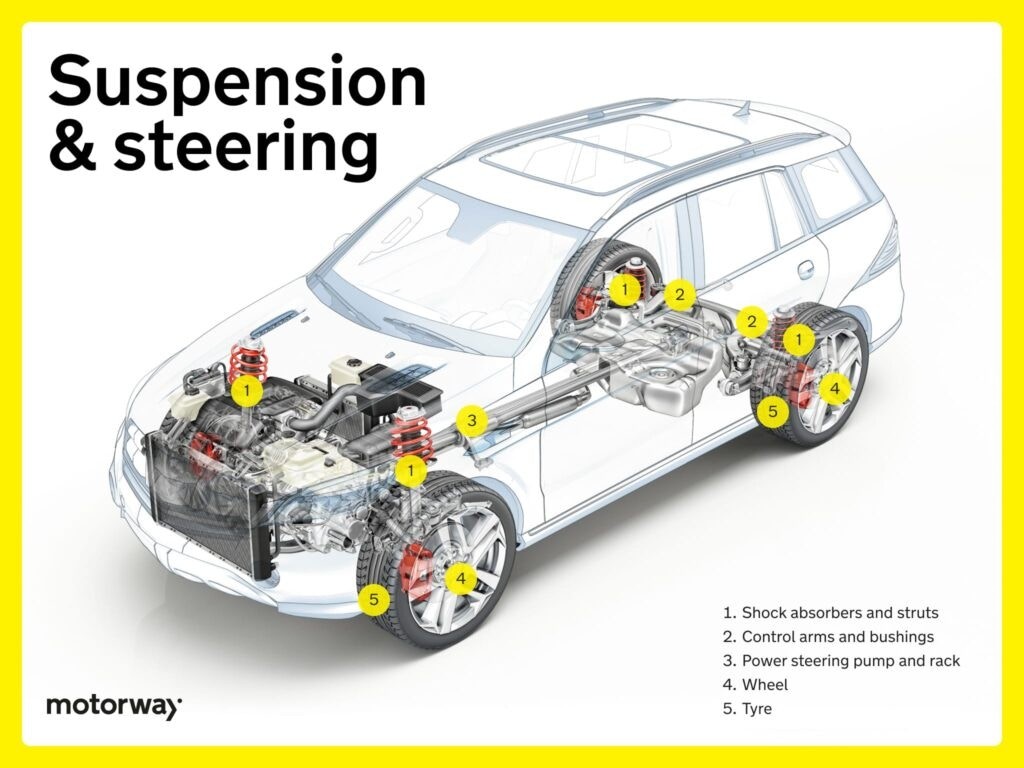
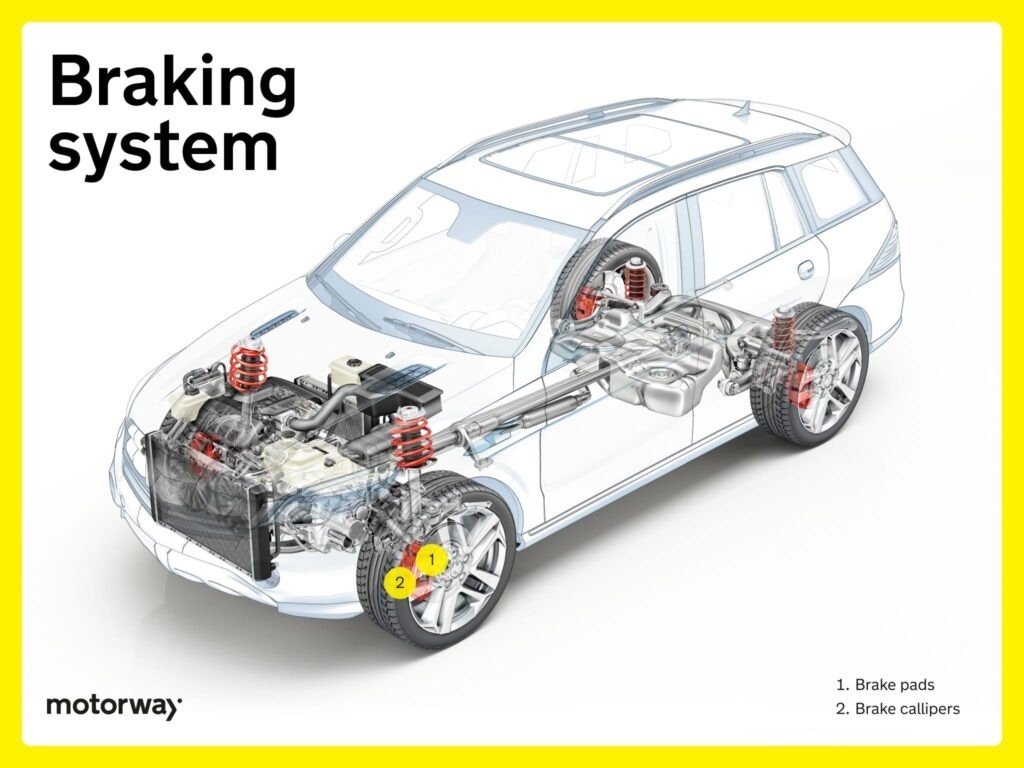
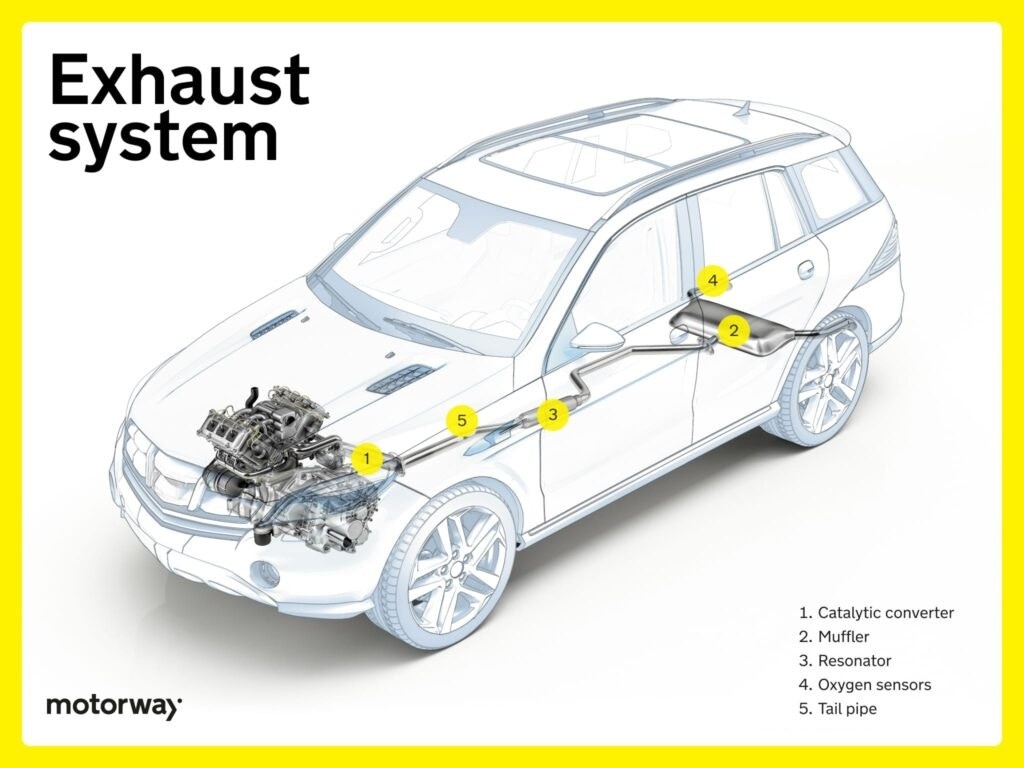
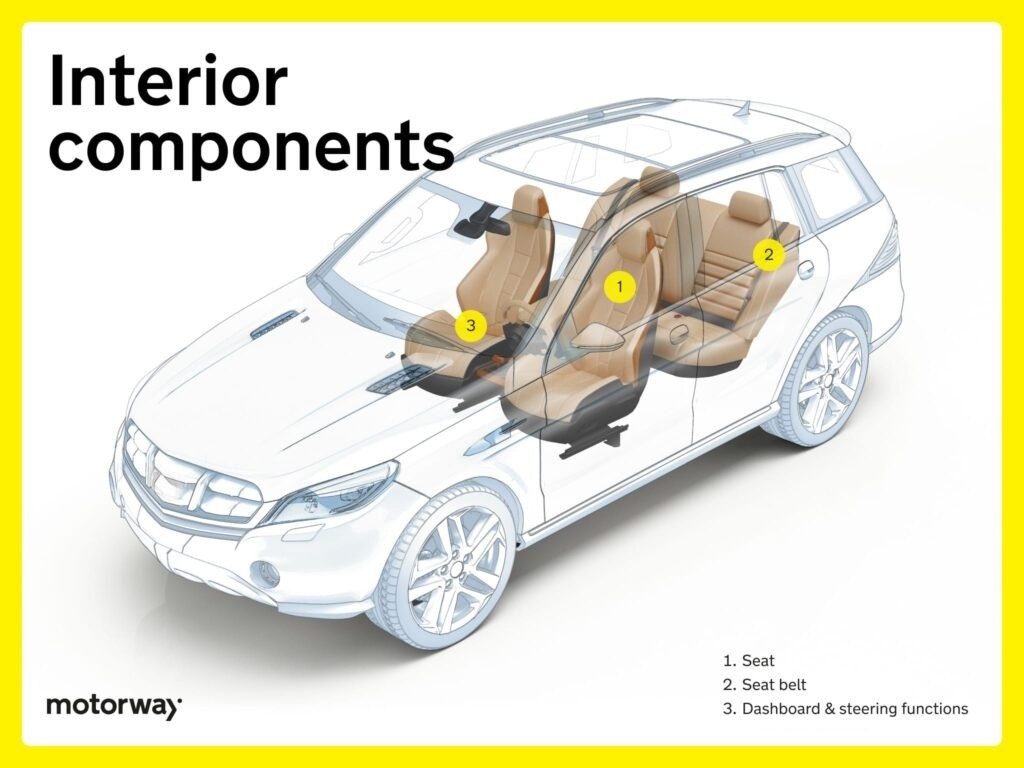
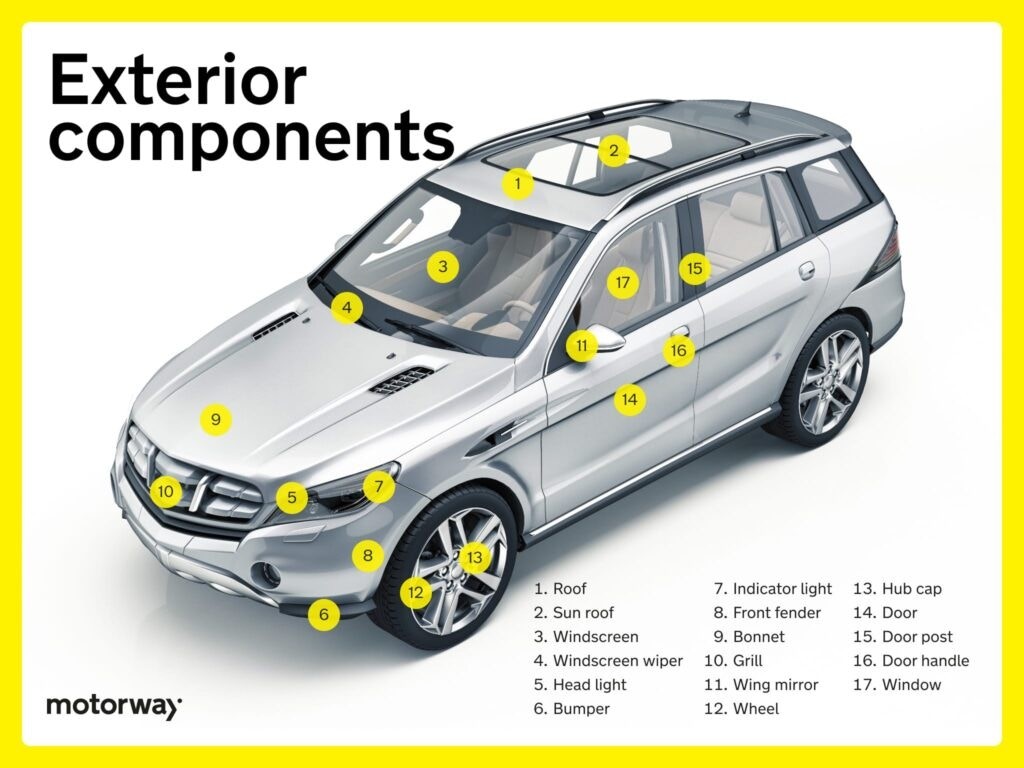
Wheel Construction Guide: Alloy vs. Steel Wheels and Construction Types
Wheel construction impacts wheel weight, strength, and aesthetics. Here’s a guide to different wheel constructions and materials:
- One-piece construction: The wheel is made from a single piece of material (alloy or steel). Common for both alloy and steel wheels.
- Two-piece construction: Consists of a center and an outer rim, bolted or welded together. Often found in performance or custom wheels.
- Three-piece construction: Modular design with a center, outer rim, and inner hoop. Offers customization, popular in aftermarket wheels.
- Forged construction: Made from compressed metal under high pressure, resulting in stronger and lighter wheels compared to cast wheels. Used in high-performance applications.
- Multi-piece construction: Combines multiple components, offering versatility in sizing and customization.
Material choices include:
- Alloy wheels: Made from aluminum or magnesium alloys. Lightweight, better heat dissipation, enhance vehicle appearance.
- Steel wheels: Constructed from steel, robust and durable. Heavier than alloy wheels, cost-effective, suitable for rugged conditions.
Tyre Pressure Monitoring System (TPMS): Maintaining Optimal Inflation
The Tyre Pressure Monitoring System (TPMS) is a safety feature that continuously monitors tyre air pressure. Sensors in each tyre transmit real-time pressure data to the vehicle’s computer. If tyre pressure deviates from the recommended level, the TPMS will issue a warning to the driver, often via a dashboard light. Maintaining proper tyre pressure, as alerted by the TPMS, is crucial for safety, fuel efficiency, and extending tyre lifespan.
FAQs About Car Parts
What Parts Are Under a Car?
Beneath a car, you’ll find essential systems like the engine, transmission, suspension system, exhaust system, and fuel system. These components are strategically located underneath the vehicle to optimize weight distribution, protect them from damage, and connect them effectively to the wheels and chassis.
How Many Car Parts Are on a Car?
The number of parts in a modern car can be surprisingly high, often exceeding 30,000 individual components. This vast number reflects the intricate engineering and complexity of modern vehicle design, encompassing numerous systems and subsystems. Electric vehicles typically have fewer parts due to their simpler powertrains.
What Are the Important Parts of a Vehicle?
Key and important parts of a vehicle include the engine, transmission, brake system, steering system, suspension, and electrical components. These systems are fundamental to the safe and reliable operation of the vehicle, each playing a critical role in vehicle performance, handling, and safety.
What Parts of a Car Can Be Sold Separately?
Many car parts can be sold individually, including engines, transmissions, body panels (doors, hoods, bumpers), wheels, and specific electrical components (alternators, starters). The market for used car parts is significant, offering options for repairs, replacements, and upgrades.
Why Is There a Shortage of Car Parts?
Car part shortages can occur due to various factors, including supply chain disruptions (global events, natural disasters), increased demand for specific components, manufacturing challenges, and logistical issues affecting production and distribution networks. Global events and economic factors can significantly impact the availability of car parts.
Need to Sell Your Car?
Want to learn more about car ownership, maintenance, or even selling your vehicle? Explore our comprehensive guides here, covering topics from Clean Air Zones to car tax and more.
